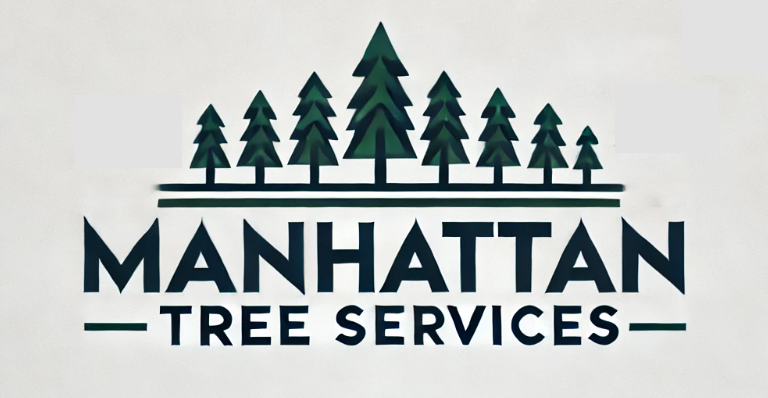
Have you ever imagined what would happen when the oak tree standing tall in your garden is chopped into pieces? No wildlife surrounds it anymore. The playful squirrels and the chirping birds that once brought life to your landscape are gone, leaving behind a bland atmosphere. This isn’t just about losing a tree but an entire ecosystem. Nowadays, trees are being removed for land development, urban expansion, or for agricultural purposes. But sadly, behind every tree canopy is a ripple effect that has severe environmental consequences. It affects the air quality, biodiversity, and climate stability. In this article, we will discover the hidden impacts of tree removal. Further, we also explore some sustainable solutions that can help you balance human needs and preserve your environment.
The Environmental Consequences of Tree Removal
Why Trees Are Crucial for Our Planet
Trees are the lungs of our planet. They are the irreplaceable components of the earth ecosystem. It is important to understand what roles it plays in our environments before we see what dangers it causes.
1. Trees Act as Earth’s Natural Air Purifiers
Trees are the uncredited natural purifiers of our environments. By absorbing some of the most harmful gases like sulfur dioxide and nitrogen oxides, they help to combat global warming.
- About 48 pounds of CO₂ per year is absorbed by a mature healthy tree through photosynthesis.
- The major carbon sinks of the ecosystem are forests. They aid in reducing the carbon footprint of industries and vehicles.
2. They Regulate Temperature and Climate
Trees help reduce the temperature of urban heat islands. This is a phenomenon in which cities can face temperature extremes due to a lack of greenery. Providing shade, trees reduce the surface temperatures and thrive in the long run.
- Cities can experience up to 7°F higher than surrounding rural areas if they have fewer trees.
- Trees also play a role in the regulation of moisture. This prevents drought and affects the rainfall patterns and prevents drought.
3. Protecting Soil and Preventing Erosion
Soil erosion occurs when trees are removed. This happens because of the absence of the root systems that once surrounded and held the soil together. Ultimately this will result in degradation of the land and increase the chances of landslides and mudslides. Moreover, it also becomes difficult for the plants to grow.
- Trees fertilize the soil by promoting nutrient cycling.
- Flash floods are one of the most disastrous effects of deforestation in the mountainous regions.
4. Trees Provide Habitat and Biodiversity Support
80% of terrestrial species live in forests. Removal of trees in such regions can harm the biodiversity that thrives in it. Birds, insects, mammals, and fungi can be displaced and no longer exist.
- One notable example is the Amazon Rainforest, which is one of the largest tropical forests. It houses over 10 million species. If trees are removed, habitat can be destroyed due to species extinction.
The Environmental Damage Caused by Tree Removal
1. Disrupting the Carbon Cycle and Increasing Global Warming
Trees have carbon stored in the biomass of the trees. When trees are removed, all of the carbon goes into the air and leads to greenhouse gas emissions. This change may cause shifts in climate change. It also leads to rising sea levels, erratic weather patterns, and extreme temperatures.
- Deforestation makes up 15 % of the global CO₂ output. This amount is more than what is released daily by the transportation sector.
- Logging and land clearing cause the breakdown of organic matter, leading to increased methane and CO₂ levels.
2. Water Cycle Disruption and Increased Flooding
Trees are essential in the regulation of the water cycle. They absorb water from the ground and release it back in the atmosphere. The absence of trees is linked to a higher probability of floods. Moreover, water pollution and reduced groundwater recharge could lead to the imbalance of the ecosystem.
- Areas with a high rate of deforestation are at the most risk of sudden floods and temporary drought. This is most commonly observed in the parts of Indonesia and Brazil.
- Soil loss can be prevented through trees as their canopies slow down the rainfall impact.
3. The Loss of Wildlife and Biodiversity Collapse
Plant and animal regions are most commonly affected due to the removal of trees. Causing disruptions in food chains and destroying critical ecosystems, lands ultimately become less hospitable for wildlife.
- Species have become extinct from deforestation. For example, in Borneo the elimination of palm oil plantations has led to orangutans being on the verge of extinction.
- Similarly, global food production is at risk due to the loss of pollinator species.
4. Declining Air Quality and Health Impacts
Health issues are on the rise due to the removal of trees. Most frequent respiratory diseases are asthma and lung infections. This is because there are fewer trees to filter pollutants.
- Higher rates of respiratory illnesses have been identified in the regions with the highest rate of deforestation due to the raised dust and pollution.
- Natural climate regulation by forests helps to reduce the risk of heat stroke and respiratory distress.
Sustainable Alternatives to Tree Removal
No doubt, sometimes tree removal can be avoided, but luckily there are some smarter ways where one can conserve the land and protect the environment.
1. Selective Cutting vs. Clear-Cutting
Forest ecosystems can be preserved by avoiding mass deforestation and opting for selective cutting. Professional arborists can harvest only the mature trees and prevent deforestation-induced soil erosion by nurturing the younger trees.
2. Tree Relocation & Pruning Instead of Removal:
Another option is that instead of removing the tree, one can opt for tree transplantation. Through this, one can move larger trees along with their root systems. This allows us to form new roads or buildings in cities by preserving the trees. Furthermore, you can continue to get shade and cooling benefits by tree pruning and canopy thinning to prevent tree-related accidents.
3. Agroforestry: A Win-Win for Farmers & Nature
Agroforestry is one effective method to add trees to farmland. It makes soil richer and boosts crop yields. It also cuts the need to cut down trees. Some techniques that can be used:
- Silvopasture: Mix livestock grazing with growing trees.
- Windbreaks: Place trees along farm perimeters to guard crops.
- Alley Cropping: Grow crops between rows of trees to boost biodiversity and soil.
4. Urban Green Spaces & Reforestation Initiatives
Green infrastructures are now gaining favor worldwide. City life can get better by:
- Green Roofs in addition to Vertical Gardens: Cover small urban spots with plants in confined spaces.
- Community Tree Planting: Spur locals to plant native trees in parks and neighborhoods.
- Reforestation Projects: Officials plus groups work to restore forests through wide-scale tree planting initiatives.
5. Supporting Sustainable Timber & Eco-Friendly Alternatives
Consumers can choose sustainably sourced products for wood production. Look for certifications like:
- FSC (Forest Stewardship Council)
- PEFC (Programme for the Endorsement of Forest Certification)
Conclusion
To sum it up, every citizen must protect and save their trees. Appropriate tree planting measures should be adopted and eco-friendly alternatives should be preferred to prevent tree removals. If you are looking for a professional tree company, choose Manhattan Tree Services. We provide customized solutions for our customers. We utilize meticulous approaches like tree pruning and strategic tree planting to nurture your trees and protect them. Contact our arborists to get a free landscape assessment!


